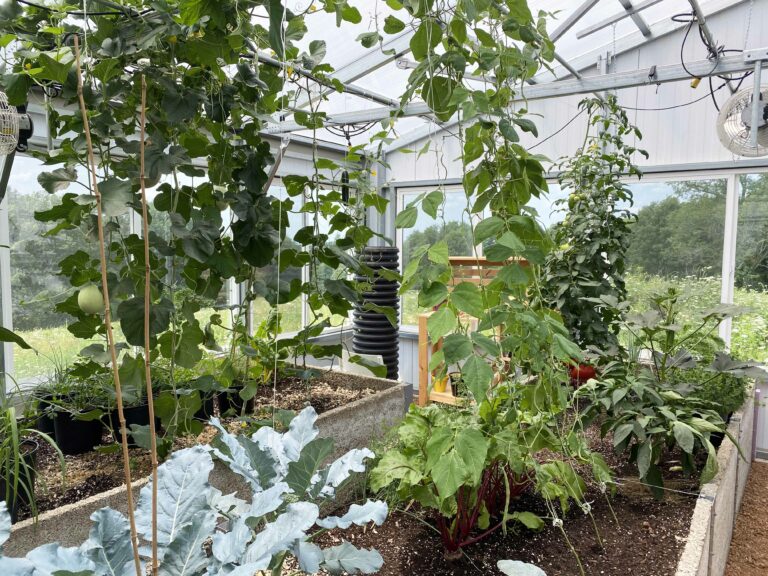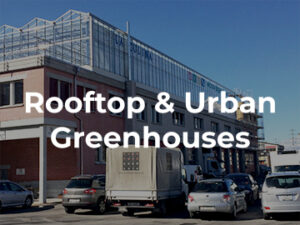Residential Greenhouses
Ever wonder where your food comes from? Or how it’s been processed before it ends up at your table? With a Ceres residential greenhouse, you can stop wondering and start becoming more self-reliant and earth-conscious by growing your own fruits and vegetables right in your backyard.
We want to empower individuals and communities to create local food economies. Let us help you find a long-lasting and abundant greenhouse solution that is right for you.

The Greenhouse Design
We provide consulting, design and architectural drawing, and engineering services for residential greenhouses. All of our greenhouse designs for residential use are based on our passive solar design principles. Size and potential complexity of a project are determining factors for choosing between a BackYard steel kit, HighYield™ Kit, or DIY plan. We will work with your existing architect to ensure you have the best solution for your growing needs.
*Our smallest Kit size starts at 18ft length, while our smallest DIY plan starts at 10ft x 12ft.

What is a "Residential" Greenhouse?
Ceres residential greenhouses simply describe an application for a greenhouse. Typically our residential clients choose one of the following styles for their residential greenhouses:
Also Looking to Build a Home?
Check out our Vesta™ kit house. It is a kit house with an attached greenhouse, so that you can grow food in the comfort of your home.

Related Residential Videos:
Access Residential Greenhouse Related Brochures

Calculate Your Energy Savings
Find out how much you can save with Ceres Greenhouses compared to standard greenhouses.

Ceres Greenhouse Options
Residential Greenhouse Technology
Different crops may demand specific lighting requirements. We offer a variety of lighting solutions designed to suit the needs of each individual operation.
A NetZero greenhouse will have zero net emissions. This goal is achieved through capturing and storing energy. This can be done using a various system options.
Ethylene tetrafluoroethylene is a durable, high light transmissive glazing option. It offers more than 95% light transmission, including the UV spectrum. More than other greenhouse companies, Ceres is implementing full spectrum glazings for maximum crop growth.
One centralized system for controlling the whole environment. Monitor temperature, relative humidity, and CO2, leaf/ canopy temp, PAR, lighting zones, and outdoor weather.
We offer Ceres designed EcoLoop™ or EcoPack™ HVAC options depending on growing goals, budget, site constraints, and greenhouse type. All Ceres environmental controls are custom integrated to suit your needs.
The GAHT® system is a ground to air heat exchanger, a system often referred to as a ‘Climate Battery’. Ceres leads the industry in climate battery technology, having designed and installed more systems in greenhouses than any other company in the world.
Different crops may demand specific lighting requirements. We offer a variety of lighting solutions designed to suit the needs of each individual operation.
A NetZero greenhouse will have zero net emissions. This goal is achieved through capturing and storing energy. This can be done using a various system options.
Ethylene tetrafluoroethylene is a durable, high light transmissive glazing option. It offers more than 95% light transmission, including the UV spectrum. More than other greenhouse companies, Ceres is implementing full spectrum glazings for maximum crop growth.
One centralized system for controlling the whole environment. Monitor temperature, relative humidity, and CO2, leaf/ canopy temp, PAR, lighting zones, and outdoor weather.
We offer Ceres designed EcoLoop™ or EcoPack™ HVAC options depending on growing goals, budget, site constraints, and greenhouse type. All Ceres environmental controls are custom integrated to suit your needs.
The GAHT® system is a ground to air heat exchanger, a system often referred to as a ‘Climate Battery’. Ceres leads the industry in climate battery technology, having designed and installed more systems in greenhouses than any other company in the world.
Residential Greenhouse FAQs
The cost of a year round greenhouse depends on a lot of things, primarily the size, which systems you decide to include, and who builds it. To give you a general idea, some growers use recycled materials and do all the work themselves and spend as little as a few hundred dollars for a residential solar greenhouse (for those using DIY plans). Growers who opt for a BackYard Kit might spend around US$50-60k, which includes the galvanized steel frame, insulated metal panels, triple layer polycarbonate glazing, entryway door, and a SunSense™ controller.
This varies greatly by location, and what you are trying to grow. In areas with mild winters, passive solar greenhouses can grow year-round without any back-up heating. Greenhouses in cold areas can even grow very hardy crops year-round without heating. However, to grow a wider variety of crops, in most cold climates an energy-efficient greenhouse will require some back-up heating. This is usually turned on during a few very cold nights a year — the extreme cold snaps — when a GAHT® system, thermal mass, or phase change material is not sufficient to keep temperatures high enough.
Residential growers typically add an electric heater for the coldest times of the year. We can help you integrate a back-up heater when designing your commercial greenhouse.
At this time, we are not designing custom residential greenhouses. However, if an attached greenhouse is a preferable option and you do not have a house yet, consider opting for our Vesta™ house kit, which is a pre fab house/greenhouse kit.
Currently,
18’x24′ US$53,774
18’x30′ US$58,691
18’x36′ US$63,609
*Base kit= galvanized steel frame, 2″ insulated metal panels, 16mm, triple layer polycarbonate on the south wall and roof, entryway door and a SunSense™ controller.
Shipping is estimated at 20%-25% of total materials costs (excluding applicable taxes). There are a variety of colors available for the BackYard Kit as well as additional upgrades and climate control options you can choose from. BackYard kits are engineered to individual wind and snow loads.
Please contact us for more information, as prices are subject to change.
Plans, available in several sizes up to a 12’x24′, can be purchased from our web store for US$950 and include all you need to construct your greenhouse with our support throughout the process. While building and labor costs vary greatly based on your geographic location, should you choose to hand this project off to a local builder, we estimate around US$150 sq/ft for all materials (both greenhouse and GAHT®) and labor.
This depends on what type of systems you want to use for growing, and controlling the greenhouse environment. Typically, our residential greenhouse growers install electricity in the greenhouse to run fans and lights, automated with our SunSense™ controller. These have a very small power draw but do require electrical hook-up.
One option is to install a solar panel system to run the electrical components.
You can also build a completely passive solar greenhouse – one that does not use any electrical components. For this we recommend using passive solar vent openers to provide automated ventilation. There are several pros and cons to building a passive solar greenhouse vs. an active one. Much more information on solar panel systems and passive solar greenhouse is in our book, The Year-Round Solar Greenhouse as well as “Integrating Solar Panels into the Greenhouse.”
With little sunlight and temperatures dropping below freezing, our residential growers most often have to rely on a supplemental heating source; such as propane, natural gas or electric heating sources.
How residential growers fare is also largely dependent on what the residents are growing. For example, for our residents growing leafy greens and more frost tolerant crops in places such as Boulder, CO and Wisconsin the GAHT® is able to maintain temperatures from as low as 27F degrees to low 40s. When it comes to growing figs or tomatoes, on the other hand, one might try keeping an electric heater running in the evenings, and mornings when there is little sun.




















